Table of contents
Does yoga work for anxiety?
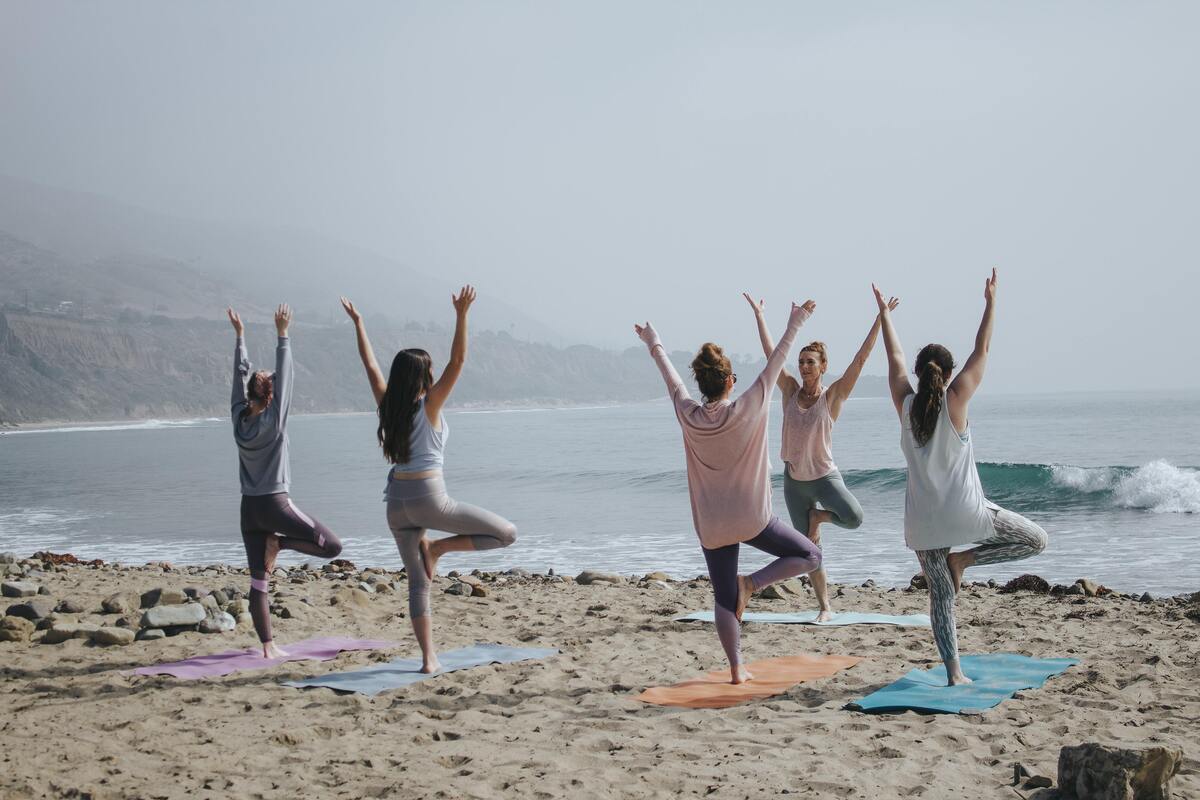
With origins in Sanskrit, yoga means to unite, integrating the layers of being. Inserting the practice into daily life helps patients with anxiety who are already undergoing medical treatments, and people who feel anxious and agitated. Holding the postures for a few complete breathing cycles has effects on the body and mind, slowing down the pace of thoughts and heartbeat.
Moreover, the yoga philosophy goes beyond the mat, contributing to a more conscious and balanced lifestyle. Even in routines with little free time, the practice can be done with short classes prioritizing constancy for effective results. In the article, you will understand how yoga alleviates the symptoms of anxiety and collaborates more quality of life.
Benefits of yoga to end anxiety
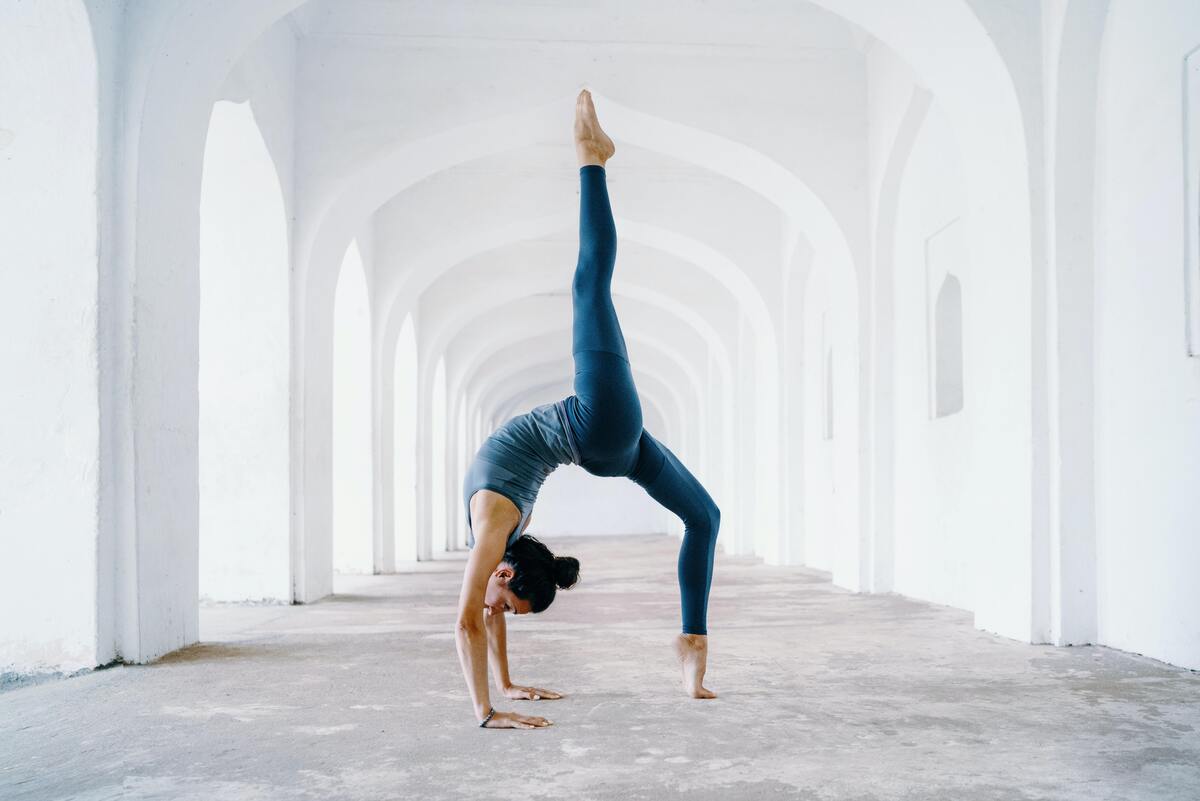
Yoga, a name that in Sanskrit means to unite, is an experience that integrates all layers of being. From pillars that involve postures, breathing, awareness of the present moment and surrender without judgment, the practice brings benefits that go beyond the physical body. See more below.
The regular practice
The regular practice of yoga, as well as the frequent performance of other physical activities, is the starting point for the physical and emotional benefits to appear. There is no rule as to the number of times a week to practice, nor in relation to the time required. To do yoga daily, just find a way not to overload the body.
For this reason, there are different types of yoga and various classes, such as those that offer a restorative experience. In addition, the postures, alone or grouped in classes, have a therapeutic effect for specific aspects, such as anxiety, depression, muscular pains, migraines, insomnia and others.
Asanas for stress relief
Yoga postures have psychophysical effects, that is, they transform the physical body and impact the emotions. Each asana that is repeated works specific muscles and can also improve circulation in the nervous system, which helps to combat anxiety and stress. Breathing properly in each one is fundamental, even if discomfort induces the yogi to hold his breath.
In addition, the asanas act harmonizing chakras and eliminating energetic blockages that are stored in certain parts of the body. Thus, stagnation is released and the individual realizes relief in daily life, achieving a balance that is quite subtle. Forward bending is widely indicated for yogis who want to reduce anxiety, appearing in classes for this purpose.
The posture of intense stretching is one of them, since the yogi bends the trunk forward and reaches the ground, or wherever he can. This asana stimulates the blood circulation in the head and promotes relaxation, as well as the pincer grip, which is similar and performed in the sitting position. The postures of the bow and the fish promote chest opening, balancing the emotions. The final relaxation is indispensable.
For those who like to challenge themselves in balancing postures, the half moon exercises focus and stillness to be performed, since one leg and one arm are suspended and the chest turns to the side. Accessories can always be used to facilitate the practice. It is in the permanence that the transformation happens, which in practice means holding the postures for a few complete breathing cycles.
Pranayamas for breathing
The pranayamas are techniques that involve totally conscious breathing. Its name comes from Sanskrit, and prana is the vital energy that is part of the universe and nourishes the body beyond its physical structure. The pranayamas are usually performed together with the asanas, the yoga postures, to enhance their psychosomatic and energetic results.
There are pranayamas for different physical and emotional responses throughout the practice. While some stimulate more mental clarity and purification, others induce relaxation. In all cases, there is an integration between the proposed posture and the body as a whole, according to the precepts of yoga.
Meditation to be in the present
Meditation is a tool that dates back to very ancient times, and has always had a strong connection with the practice of yoga. Meditation is a means of establishing contact with the deepest part of one's being, and its principle of non-judgmentalism gives space to perform meditation in whatever way the individual prefers.
When meditating, the mind continues to think, and it is normal for there to be fluctuations and thoughts to arise. Regardless of the type of practice, meditation relaxes and connects to the present moment, the only one that truly exists and in which transformations take place in all spheres of being.
Yoga philosophy for life
The practice of yoga, while the best-known strand of India's age-old traditions, is just one component of a philosophy that has existed for more than five thousand years. Uniting body, mind and spirit, yoga challenges practitioners to take its precepts beyond the mat and the daily moment of class and postures.
Therefore, the philosophy of yoga is taken to life in its entirety, in the relationship of the individual with himself and with others. The commandments of yoga are divided into two groups, those of ethical nature and behavioral. Such principles are due to the complete integration proposed in each posture, pranayama, mudra and everything that involves the practice.
The commandments are: non-violence; truth; do not steal; moderation of pleasures; detachment; cleanliness; contentment; discipline; self-study and surrender. In the same way that yoga philosophy is presented in the discovery of challenges, in the results achieved and in the experience itself, the same can be applied beyond the mat.
Prayer
The use of prayers is part of yoga practice when it comes to revering the great masters. Like the mantras, the prayers strengthen the contact of the practitioner with the subtlest part of herself, in addition to contact with the present moment. Yoga practice has no ties with any religion, so it does not exclude or differentiate its practitioners.
Empathy
Empathy and yoga have a lot to do with each other, since the practice needs the empathic side of the yogi for the integration between the layers of the being to really present itself. For this, it is necessary to look with empathy at the physical and emotional manifestations before, during and after the practice, offering oneself the welcome that is reflected in the principle of non-judgment disseminated by Indian traditions.
Impermanence
One of the pillars of yoga practice is the understanding of the impermanence of life. In practice, it corresponds to the release of the need for control, as well as the acceptance of situations without unnecessary stress.
Understanding impermanence means seeing the world as something that is in constant movement and transformation. The fluidity of the universe is due to the energy that circulates all the time and, at every moment, is capable of creating different realities.
Surrounding yourself with positivity
The practice of yoga focuses on the point where you place your attention. When the yogi connects with the present moment, he is halfway to connecting with the positivity that exists in the universe. To do this, you must allow the universal energy to flow, through postures, breathing and the use of mantras, which contribute to more concentration and surrender during the classes.
Identifying Anxiety
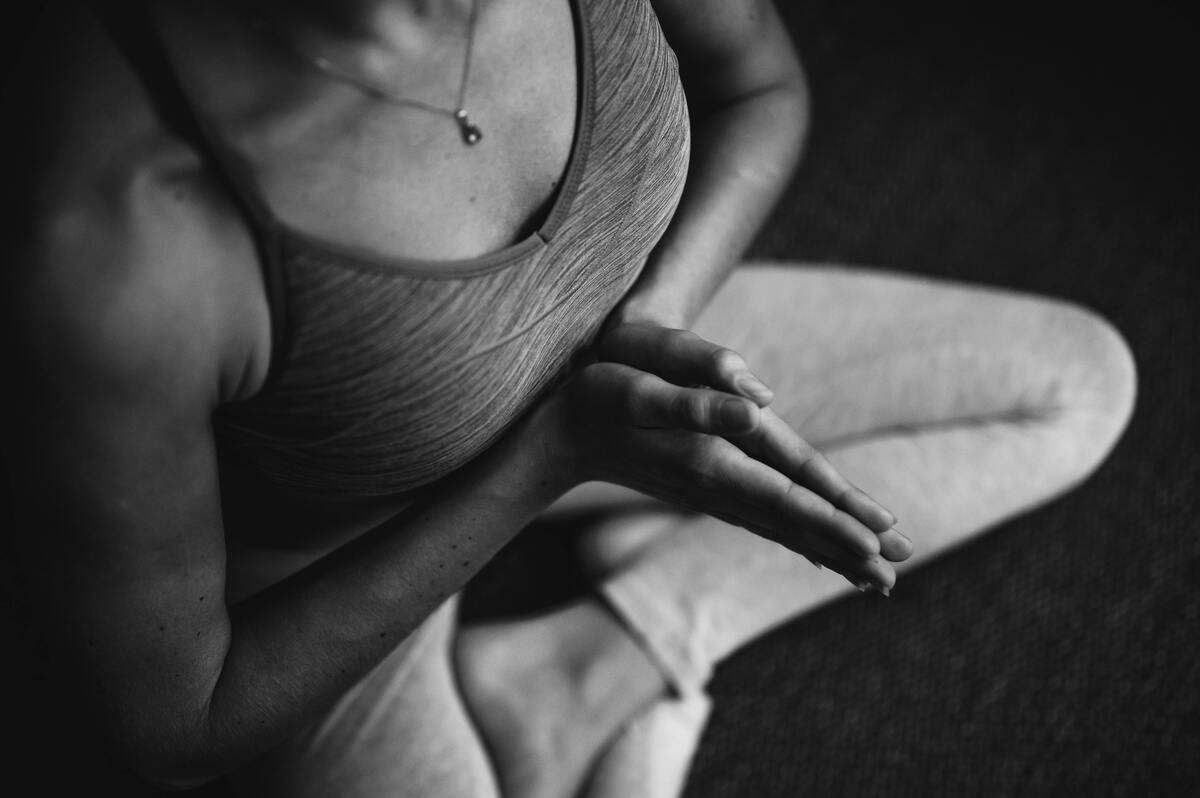
In short, anxiety is characterized by the individual's concern about the future. Therefore, the disorder is related to events that have not happened yet and, perhaps, will not occur. This situation happens occasionally to everyone, especially before decisive and long-awaited moments. Learn what differentiates these normal cases from something more serious and what the symptoms are.
Physical symptoms
Among the physical symptoms most present in the routine of those who suffer from anxiety are dizziness, feeling faint, dry mouth, palpitations, chest pain, shortness of breath and tremors.
In addition, there are patients who experience muscle tension, nausea, and have migraine attacks. Cold sweats, numb arms, and even insomnia can manifest, and not all symptoms need always occur.
Psychological symptoms
Emotionally, anxiety symptoms are distressing and compromise the body's health in a generalized way. This happens because psychological manifestations have an effect on the physical body, impacting the patient's quality of life and well-being. The main psychological symptoms of the disorder begin with excessive worry about the future or specific situations.
Lack of concentration, constant nervousness, feeling that something bad is going to happen, fear of losing control and depersonalization are also common. The individual can also be more irritable and agitated.
Anxiety and insomnia
Anxiety disorder can often be linked to episodes of insomnia. It is not uncommon for one problem to trigger the other, since anxiety attacks can compromise the quality of sleep.
Similarly, the person who cannot sleep can become anxious due to the difficulty of resting, which causes even more insomnia and aggravates the symptoms of anxiety and harms the health as a whole.
Anxiety and depression
It is very common that patients being treated for anxiety also present depression, and the opposite is true. This is due to imbalances of environmental, genetic origin, traumatic events and highly stressful situations, among other causes. Therefore, there are diagnoses with symptoms of both disorders, without a unique classification according to the International Code of Diseases.
In both cases, professional follow-up is essential to monitor the progression of symptoms and ensure more quality of life. Complementary therapies have been increasingly used to bring more well-being and lightness to the patient.
What to do in an anxiety crisis
When the mind understands that it is facing a threat or dangerous situation, it develops the need for an exaggerated alert instinct. If you or someone you know has symptoms such as palpitation, shortness of breath, feeling of suffocation and unreality, fear of losing control and chills, for example, a crisis is in progress.
It is necessary to divert the attention of the anxious person, which can be done by focusing on breathing. Thus, the body begins to calm down with slower respiratory flow and oxygenation of the nervous system. Relaxing the muscles is also a solution, as well as guided meditations and tasks that offer a distraction from the anxiety crisis.
Adopting a yoga routine is an alternative to minimize the crisis symptoms and have more quality of life in the medium and long term. In cases of severe anxiety, it is necessary to seek a specialized professional to start a treatment.
Breathing for anxiety
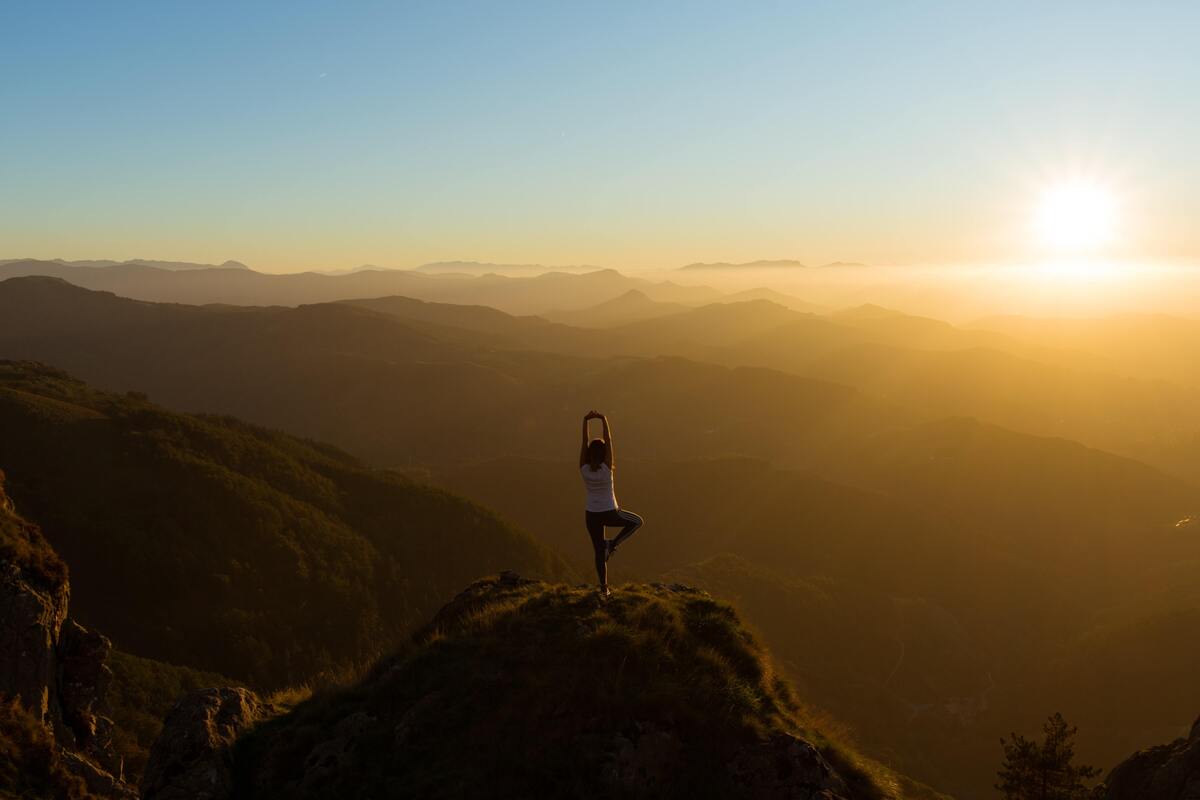
Breathing is responsible for building mental patterns. So, to balance the mind in a state of anxiety, breathing the right way makes all the difference. By adjusting the breathing, the nervous system is oxygenated, the heart rate is balanced and hormones like cortisol are balanced in the bloodstream. Learn more below.
Kapal Bhati Pranayama
Kapal Bhati Pranayama is a type of breathing indicated to combat anxiety, because it takes more oxygen to the brain. To perform it, just inhale slowly and deeply bringing the navel forward, and then exhale quickly and vigorously. Repeating a few cycles of this pranayama clears the airways, and its realization can be done at the beginning of the day for better results.
Bhastrika Pranayama
Bhastrika is a breathing that should be done with rapid and intense inhalations and exhalations, at a fast pace. Abdominal contraction is an important detail, and this pranayama acts releasing the energy blockages present in the individual, in addition to oxygenating the blood. Its practice helps people with anxiety to have more quality of life.
Bhramari Pranayama
To quickly relieve tension, Bhramari Pranayama is indicated. The technique involves taking a deep breath in and releasing while pressing on the cartilage between the cheeks and ears, which creates a sound similar to that of a bee. This breath also lowers blood pressure and migraines, providing ample benefits against anxiety.
Mudras for anxiety
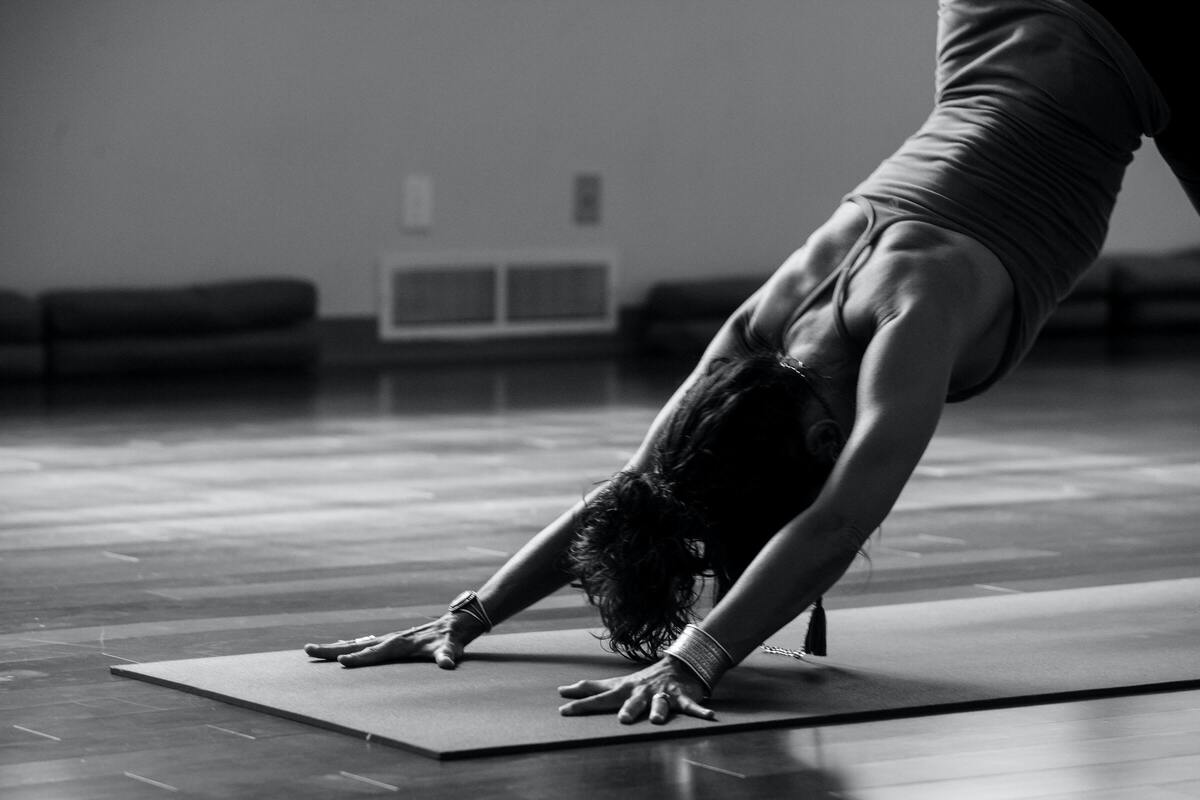
Along with the asanas, mudras are gestures that connect the being to brain patterns, providing the balance of the energy of the elements. This is due to the construction of symbols with the fingers and palms, creating channels of full integration between body, mind and spirit. Check it out:
Agni Shakti Mudra
The Agni Shalti Mudra balances, stimulates or maintains the fire energy in the body. Its most common practice is during meditations and, to do it, just join your thumbs in a horizontal line and keep the other fingers folded. For those who already have the element at a high level, this mudra requires care.
Gyan Mudra / Chin Mudra
The Gyan or Chin Mudra can be incorporated to some asanas, or performed during seated meditations. For this, it is enough to join the thumb to the index finger, keeping the other fingers united and straight. This mudra stimulates the circulation of prana in the body, helps concentration and balance the internal energy of the being.
Kalesvara Mudra
The Kalesvara mudra is connected to the control one can exert over the body to calm it, in reverence to the appreciation of time. The gesture comprises joining the middle fingers and thumb to the first joint, and keeping the others bent. The thumb should point towards the chest, and the elbows towards the sides.
Uttarabodhi Mudra
The Uttarabodhi Mudra is a great ally to calm agitated minds and overloaded of tasks, besides calming the nerves. Its application is inspiring and brings power to the being from the union of the index fingers pointing to the ceiling and the thumbs pointing to the chest. The other fingers remain intertwined.
When to practice yoga for anxiety?
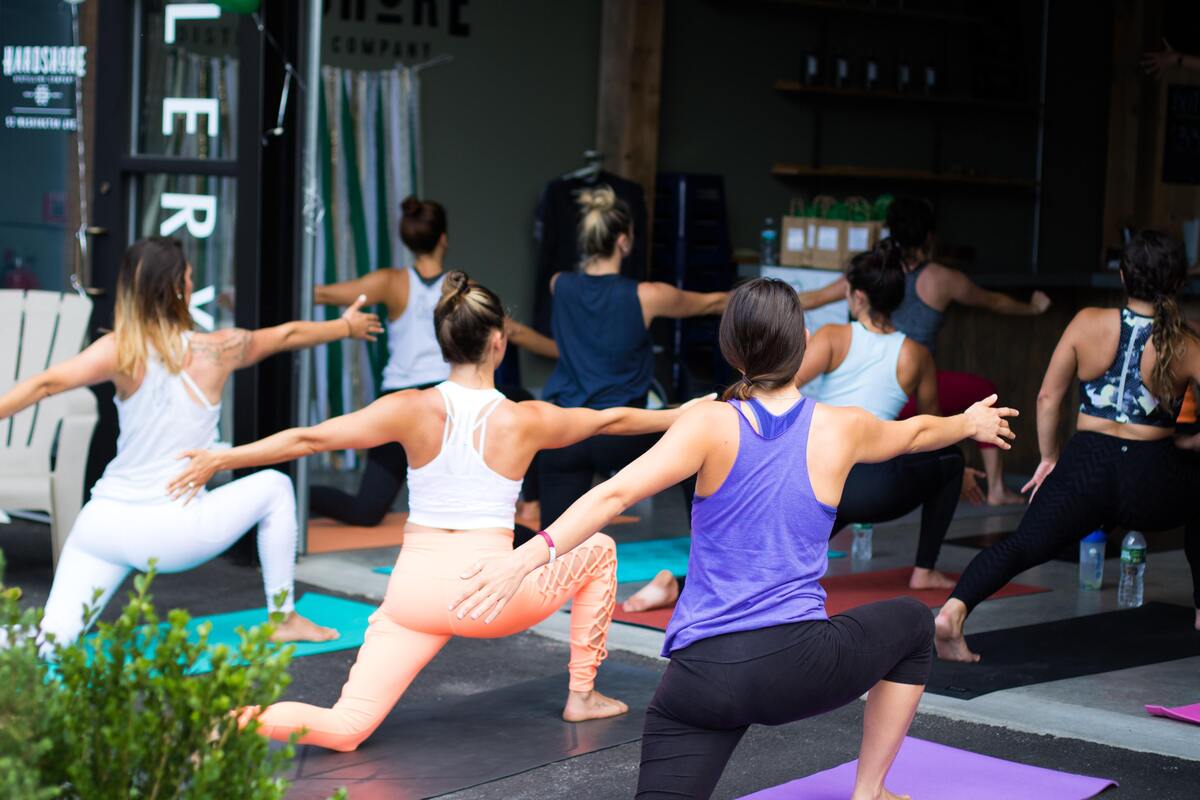
The practice of yoga with specific purposes, such as treatment for imbalances of physical or emotional origin, can be performed as needed. If the individual presents symptoms and takes a class, the body and mind will feel the effects, being or not a yogi. However, in cases of health problems, constancy is fundamental to maintain the results.
When it comes to anxiety, there are postures that help mental balance and relaxation. In addition, the use of pranayamas is also indicated, as well as breathing with slower exhalation, which stimulate the parasympathetic system.
The use of complementary treatments and a more integrated and complete experience are differential for those who want to transform their lives, even with reduced free time.

